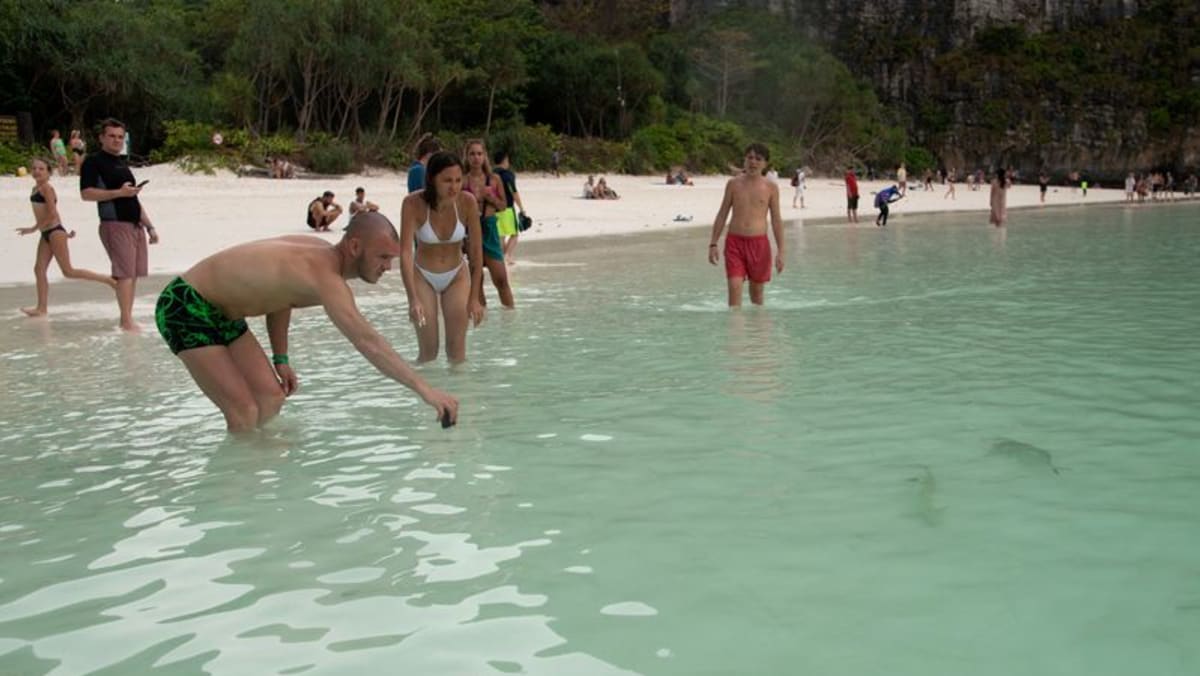
MAYA BAY, Thailand: On any given day in Thailand’s Maya Bay, up to 40 blacktip reef sharks cruise in the cyan shallows while about 4,000 tourists visit its white-sand beach flanked by towering cliffs.
Shark numbers have improved since almost every last one was driven from the bay by the influx of tour boats and tourists keen to see the uninhabited idyll that was made famous as the set of Leonardo Di Caprio’s 2000 thriller The Beach.
The sharks returned after a tourism ban and the COVID-19 pandemic between 2018 and 2022 halted all visitors to the bay.
Authorities allowed limited tourism to resume in 2022, and now conservationists say shark numbers are thinning out again, leaving Maya Bay struggling to strike a balance between preserving a pristine ecosystem and sustaining livelihoods dependent on tourism.
“We don’t talk about closing down everywhere or reducing the tourism numbers, but I think we are talking about managing it wisely,” said Petch Manopavitr, a marine advisor to Thailand’s National Parks Department.
SHARK NURSERY
Maya Bay lies in Phi Phi Leh Island, a spec of limestone rock covered in emerald-green vegetation in the Andaman Sea off Thailand’s west coast.
Marine researcher Metavee Chuangcharoendee said that thanks to the pause in tourism the island was once again functioning as a nursery for young sharks.
She and other researchers at the Maya Shark Watch Project use underwater cameras and drones to count sharks and observe their behaviour, feeding areas, and breeding patterns. In the year between November 2021, when they initiated a pilot study, and the end of 2022, they noticed a decrease in the number of sharks as tourists gradually returned.
